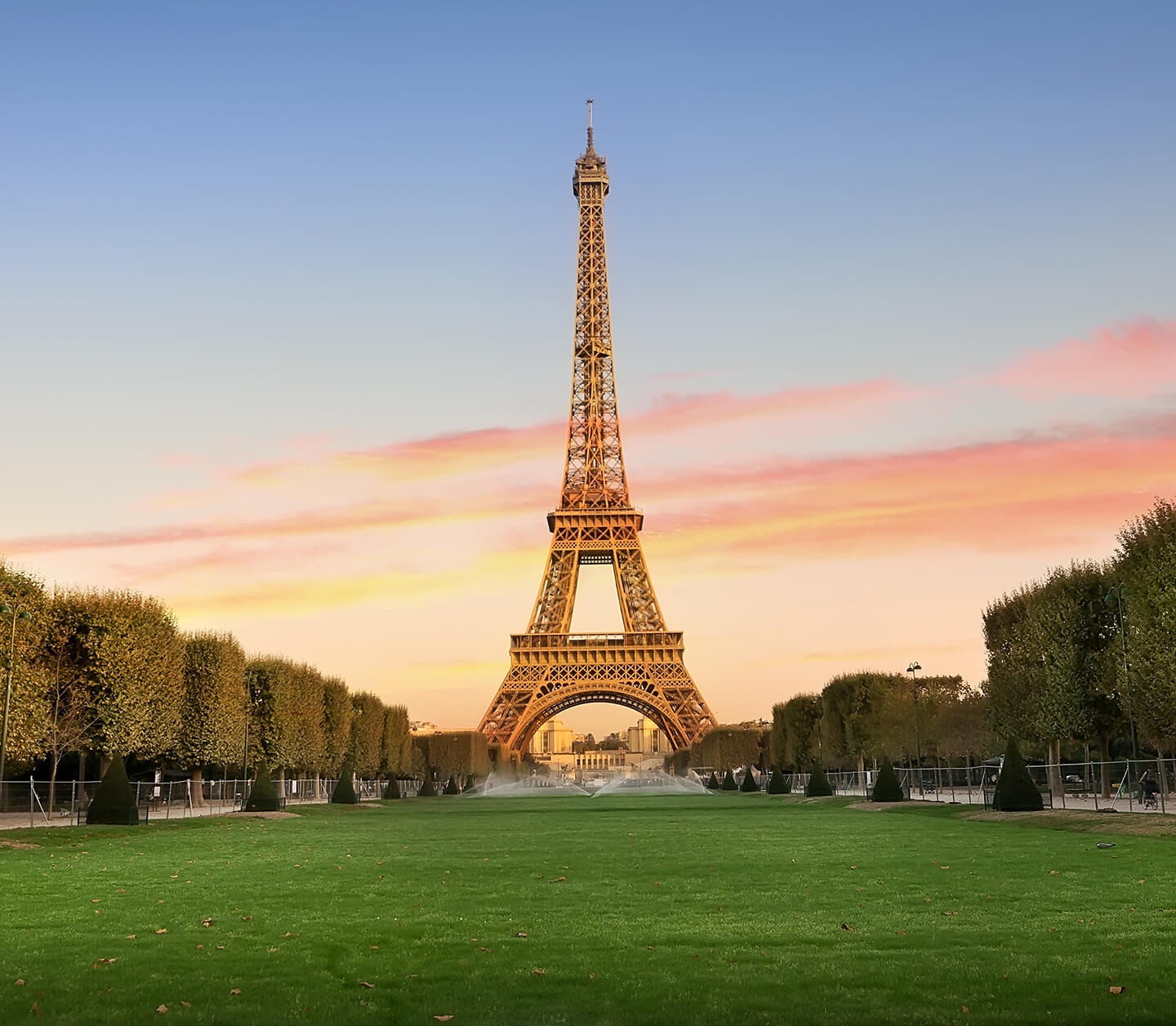In this free audio guide, you will learn about the Eiffel Tower, located in the center of Paris, France. Join us on an unforgettable journey through the history, architecture, and secrets of this awe-inspiring monument.
Eiffel Tower – Free Audio Guide
Part 1
Part 2
Part 3
Part 4
Part 5
Editor’s Choice
Vatican City Free Audio Guide
Notre-Dame de Paris Free Audio Guide
Louvre in Paris – Free Audio Guide
The Eiffel Tower is a wrought-iron (meaning iron with carbon) lattice tower on the Champ de Mars in Paris, France. It is named after the engineer Gustave Eiffel, whose company designed and built the tower.
In this audio guide, we will talk about the history, design, and important personalities of this place. And at the end of the video, we will have some interesting facts and takeaways.
Locally nicknamed “La dame de fer” (French for “Iron Lady”), it was constructed from 1887 to 1889 as the centerpiece of the 1889 World’s Fair. Although initially criticized by some of France’s leading artists and intellectuals for its design, it has since become a global cultural icon of France and one of the most recognizable structures in the world. The tower received almost 6 million visitors in 2022, up 197 percent from 2021 when numbers dropped due to the COVID virus. The Eiffel Tower is the most visited monument with an entrance fee in the world: almost 7 million people ascended it in 2015. It was designated a monument historique in 1964 and was named part of a UNESCO World Heritage Site in 1991.
The tower is 330 meters tall (1083 feet), which equals the 81-story building. It’s the tallest structure in Paris. Its base is square, measuring 125 meters (410 feet) on each side. During its construction, the Eiffel Tower surpassed the Washington Monument to become the tallest human-made structure in the world, a title it held for 41 years until the Chrysler Building in New York City was finished in 1930. It was the first structure in the world to surpass both the 200-meter and 300-meter mark in height. Due to the addition of a broadcasting aerial at the top of the tower in 1957, it is now taller than the Chrysler Building by 5 meters (17 feet). Excluding transmitters, the Eiffel Tower is the second tallest free-standing structure in France after the Millau Viaduct (bridge in Southern France).
The tower has three levels for visitors, with restaurants on the first and second levels. The top level’s upper platform is 276 meters above the ground (906 feet) – the highest observation deck accessible to the public in the European Union. Tickets can be purchased to ascend by stairs or lift to the first and second levels. The climb from ground level to the first level is over 300 steps, as is the climb from the first level to the second, making the entire ascent a 600-step climb. Although there is a staircase to the top level, it is usually accessible only by lift. On this top, third level is a private apartment built for Gustave Eiffel’s private use. He decorated it with furniture by Jean Lachaise and invited friends such as Thomas Edison.
Let’s quickly talk about the history of this building.
Interesting facts and takeaways
- The Eiffel Tower was the tallest building in the world between 1889 and 1930. And it is still the highest structure in Paris.
- Gustave Eiffel engraved on the tower the names of 72 French scientists, engineers, and mathematicians in recognition of their contributions to the building of the tower.
- It’s been a part of a UNESCO World Heritage Site since 1991.
- The total weight of the building (carcass, lifts, shops, and antennae) has brought the total weight to approximately 10.1 thousand tonnes.
- The tower is painted in three shades: lighter at the top, getting progressively darker towards the bottom to complement the Parisian sky.
- The Eiffel Tower is the most visited monument with an entrance fee in the world.
- The height of the tip is 330 meters (or 1083 feet).
- The Eiffel Tower sways by up to 9 cm (3.5 inches) in the wind.
- Maintenance of the tower includes applying 60 tons of paint every seven years to prevent it from rusting. The tower has been completely repainted at least 19 times since it was built.
- The illumination of the tower is considered an “original visual creation” protected by copyright.
- As one of the most famous landmarks in the world, the Eiffel Tower has been the inspiration for many replicas and similar towers (Blackpool Tower, Tokyo Tower, replica in Las Vegas, Kings Island in Mason, Ohio, Durango Mexico).
- In 2011, the TV show Pricing the Priceless on the National Geographic Channel speculated that a full-size replica of the tower would cost approximately 480 million US dollars to build. This would be more than ten times the cost of the original budget.
- Due to high demand make sure to buy tickets to the tower beforehand.




